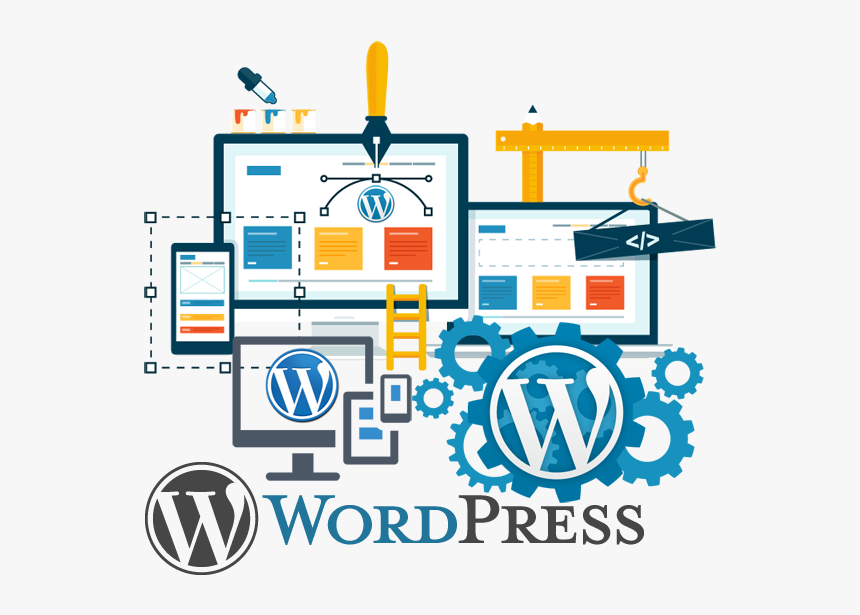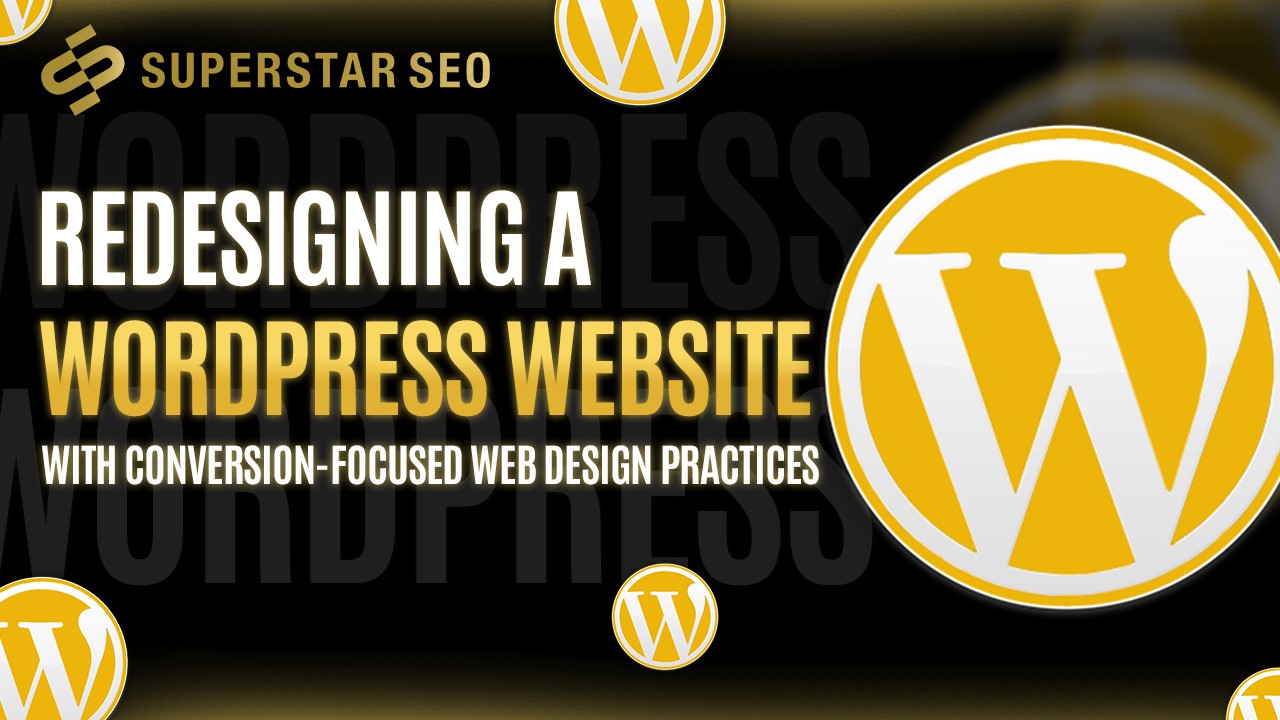Redesigning a WordPress Website with Conversion-Focused Web Design Practices
Redesigning your WordPress website with a focus on conversion optimization is a crucial step toward enhancing your site's performance and overall user experience. By prioritizing conversion-focused web design practices, you can transform your website into a powerful tool that not only captivates visitors with its aesthetics but also effectively guides them toward becoming customers or leads. This approach ensures that every element of your website is aligned with your business goals, resulting in a more impactful online presence.
Implementing conversion-focused strategies involves a comprehensive approach to website design. It's about creating an intuitive user experience, optimizing site structure, and ensuring that your call-to-action (CTA) buttons are prominently placed and compelling. These elements work together to create a seamless journey for your visitors, making it easier for them to engage with your content and take the desired actions. By focusing on these aspects, you can create a website that not only looks great but also performs exceptionally in converting visitors.
As you embark on your website redesign process, it's important to keep these key strategies in mind. By integrating conversion-focused practices into your WordPress website, you can create a platform that effectively supports your business objectives. This approach not only enhances the aesthetic appeal of your site but also ensures that it is optimized for maximum conversion potential. With a well-designed website, you can attract more visitors and convert them into loyal customers, ultimately driving the success of your online business.
1. Define Your Conversion Goals
Before starting the redesign process, it's essential to clearly define what conversions mean for your website. This could involve generating leads, selling products, or encouraging sign-ups. Establishing clear conversion goals is a crucial step as it influences your design decisions and provides a benchmark for measuring success. By understanding what you aim to achieve, you can tailor your website's design to support these objectives effectively.
Setting conversion goals allows you to focus your design efforts on elements that directly contribute to your desired outcomes. For example, if generating leads is your primary goal, you might prioritize the placement and design of contact forms and call-to-action buttons. On the other hand, if selling products is your main objective, you'll likely emphasize product images, descriptions, and an easy-to-navigate checkout process. These targeted design choices help ensure that your website is aligned with your business goals. Web Design Los Angeles companies may effectively help you work on your goals.
Having clear conversion goals also enables you to track and analyze your website's performance more effectively. By monitoring metrics related to your specific objectives, you can gain insights into how well your website is converting visitors and identify areas for improvement. This data-driven approach allows you to make informed decisions about future design changes and optimize your website for even better conversion rates.
2. Optimize Your Site Structure
A well-organized site structure is fundamental to enhancing user navigation and optimizing your website for search engine indexing. By creating a logical hierarchy of pages, you can guide visitors effortlessly through your site, enabling them to find the information they seek with ease. An intuitive menu is key to this process, as it provides clear pathways to the different sections of your site, thereby improving the overall user experience and increasing the likelihood of conversion.
The organization of your site's structure extends beyond just the menu; it encompasses the layout of your content, the categorization of your pages, and the way in which you link between different parts of your site. Each of these elements should be designed with the user in mind, ensuring that the journey through your website is as smooth and straightforward as possible. This not only benefits your visitors but also helps search engines understand and index your content more effectively, potentially boosting your rankings and visibility.
Investing time and effort into organizing your site structure can have a significant impact on your website's performance. When visitors can quickly and easily find what they are looking for, they are more likely to engage with your content, complete a desired action, or make a purchase. This improved user experience can lead to higher conversion rates and, ultimately, contribute to the success of your online presence.
3. Focus on User Experience (UX)
A positive user experience is a cornerstone of a successful website, playing a crucial role in driving conversions. One key aspect of this is ensuring your website is responsive, which means it adapts seamlessly to different screen sizes and devices. A website that looks and functions well on desktops, tablets, and smartphones is more likely to retain visitors and encourage them to take action.
Another critical factor in user experience is page load times. Slow-loading pages can be a major deterrent for visitors, leading them to abandon your site in favor of faster alternatives. Therefore, it's important to optimize your website's performance to ensure pages load quickly and efficiently. This not only enhances the user experience but also positively impacts your search engine rankings.
Content clarity and the strategic placement of call-to-action (CTA) buttons are also vital for conversions. Clear and concise content helps visitors understand your offerings and the value you provide, while compelling CTAs guide them towards taking the desired action, whether it's making a purchase, signing up for a newsletter, or contacting your business. By focusing on these elements, you can create a website that not only provides a great user experience but also effectively converts visitors into customers.

4. Implement Effective CTA Buttons
Call-to-action (CTA) buttons are a critical element of conversion-focused design, serving as the primary means of guiding visitors toward desired actions. To maximize their effectiveness, it's essential to use action-oriented language that clearly communicates what you want the user to do, such as “Buy Now,” “Sign Up,” or “Learn More.” This direct approach helps to eliminate any ambiguity and encourages visitors to take the next step.
The visual design of your CTA buttons is equally important. Using contrasting colors can make your buttons stand out on the page, drawing the user's attention and prompting them to click. The goal is to create a visual hierarchy that prioritizes your CTAs, making them the focal point of your pages.
Strategic placement of your CTAs is crucial for maximizing conversions. Positioning them prominently on key pages such as the homepage, product pages, and blog posts ensures that they are easily accessible at the moments when visitors are most likely to be persuaded to take action. By carefully considering the placement and design of your CTAs, you can significantly enhance their effectiveness and drive better conversion rates on your website.
5. Use Landing Pages for Specific Campaigns
Creating dedicated landing pages for your marketing campaigns is a strategic approach to enhancing conversions. These pages are designed with a singular focus, ensuring that visitors are not distracted by other elements and are directed toward the primary call-to-action (CTA). This clarity of purpose is crucial for converting visitors who arrive from specific sources such as email campaigns, social media ads, or search engine marketing.
The effectiveness of a landing page lies in its ability to provide a seamless and relevant experience for the visitor. By aligning the content and design of the landing page with the messaging of the marketing campaign, you can increase the likelihood of conversion. For instance, if your campaign is promoting a special offer, the landing page should prominently feature the details of the offer and a clear CTA encouraging visitors to take advantage of it.
In summary, dedicated landing pages are a powerful tool in your conversion-focused design arsenal. By providing a focused and relevant experience, these pages can significantly improve the effectiveness of your marketing campaigns, leading to higher conversion rates and a better return on investment.
6. Optimize Forms for Conversions
If form submissions are a key part of your conversion goals, it's crucial to design user-friendly forms that encourage completion. Keeping forms short and requesting only essential information can prevent visitor fatigue and increase the likelihood of submission. Clear labels are also important, as they guide users through the form and ensure they understand what information is required.
In cases where more data is needed, consider implementing multi-step forms. This approach breaks down the form into smaller, more manageable sections, making it less overwhelming for users. Each step should be clearly marked, and progress indicators can be used to show users how far they have come and how much is left to complete. This can help maintain engagement and reduce the chances of users abandoning the form halfway through.
Overall, optimizing your forms for user-friendliness can significantly enhance the user experience and improve your website's conversion rates. By keeping forms concise, clear, and approachable, you can encourage more visitors to complete them, bringing you closer to achieving your conversion goals.
7. Leverage Social Proof
Social proof is a powerful tool in conversion-focused web design, as it leverages the positive experiences of others to build trust and credibility. Customer testimonials, reviews, and case studies are all forms of social proof that can have a significant impact on a visitor's decision-making process. By prominently displaying these elements on your website, you can create a sense of trustworthiness and reliability, which can encourage visitors to take action.
Testimonials from satisfied customers can provide a personal touch, while reviews offer a more objective perspective on your products or services. Case studies, on the other hand, provide in-depth insights into the success stories of your clients or customers, showcasing the effectiveness of your offerings. Together, these forms of social proof paint a comprehensive picture of the value you provide, making it more likely for visitors to engage with your website and convert.
In summary, incorporating social proof into your website design is a strategic way to enhance conversions. By showcasing the positive experiences of others, you can build trust and confidence among your visitors, leading to increased engagement and a higher likelihood of achieving your conversion goals.
8. Conduct A/B Testing
A/B testing is a valuable technique in conversion-focused web design, allowing you to make data-driven decisions to enhance your website's performance. By creating two versions of a web page and comparing their conversion rates, you can identify which elements are more effective in driving conversions. This could include testing different headlines, call-to-action (CTA) buttons, images, or layouts to determine which variations resonate most with your audience.
The process of A/B testing involves showing version A to one group of visitors and version B to another, then analyzing the results to see which version performs better. This empirical approach helps you understand what changes lead to improvements in conversion rates, enabling you to optimize your website based on real user data.
In conclusion, A/B testing is a powerful tool for continuously improving your website's effectiveness. By systematically testing different elements of your web pages, you can make informed changes that lead to higher conversions, ultimately enhancing the overall success of your website.

9. Monitor and Analyze Performance
Using tools like Google Analytics to track your website's performance is essential for understanding user behavior and identifying opportunities for improvement. By monitoring key metrics such as bounce rate, conversion rate, and time on site, you can gain valuable insights into how visitors interact with your website. This data allows you to pinpoint areas where your website may be falling short and make informed decisions about how to enhance the user experience.
For example, a high bounce rate might indicate that your landing pages are not effectively capturing visitors' attention or that your content is not relevant to their needs. Analyzing the conversion rate can help you understand how well your website is converting visitors into customers or leads. Meanwhile, tracking the average time on site can provide clues about the level of engagement with your content.
In summary, leveraging analytics tools like Google Analytics is a critical component of a successful web strategy. By regularly monitoring and analyzing your website's performance metrics, you can continuously refine your site to better meet the needs of your users, ultimately leading to improved conversions and a more effective online presence.
10. Stay Updated with Trends
Keeping up with evolving web design trends and best practices is crucial for maintaining a conversion-focused website that stays relevant and effective. As technology advances and user preferences change, what worked yesterday might not be as effective today. Staying informed about the latest developments in conversion-focused design allows you to adapt and innovate, ensuring that your website continues to engage and convert visitors.
Regularly updating your website based on these trends and best practices is key to staying ahead of the curve. This could involve implementing new design elements, optimizing your site's layout for better user experience, or incorporating emerging technologies that enhance website functionality. By keeping your website fresh and up-to-date, you can continue to capture the attention of your audience and maintain a competitive edge in the digital landscape.
In summary, staying informed about the latest trends in web design and regularly updating your website are essential strategies for ensuring its continued effectiveness. By being proactive and responsive to changes in the industry, you can keep your website at the forefront of conversion-focused design, driving success for your online presence.
Conclusion
By incorporating these conversion-focused web design practices into your WordPress website redesign, you can create a site that not only looks great but also effectively drives conversions and achieves your business goals.





